- Home
- Patricia Briggs
River Marked mt-6 Page 13
River Marked mt-6 Read online
Page 13
“Grandpa Gordon changes,” said Calvin. He looked as though he had sucked on a lemon as he stared at me.
He didn’t not-lie very well, either. Maybe it was something medicine men learned when they were older. I had a feeling that his uncle Jim could not-lie as smoothly as any fae, and I’d seen that his grandfather could do the same. So why had they sent Calvin out with us? Unless they wanted us to share their secrets.
And the reason they might want us to know was tied up with Gordon Seeker, Yo-yo Girl Edythe’s prophecy, and whatever had happened to Benny and his sister that Calvin wanted to wait until later to tell us.
Someday, I’m going to meet some supernatural creature who tells me everything I should know up front and in a forthright manner—but I’m not going to hold my breath.
“That hawk wasn’t Gordon,” said Adam, who could tell a bad not-lie as well as I could. “Who was it?”
If Gordon could change, and the hawk wasn’t Gordon, then there were three of us. Three walkers. Gordon had known about me, about my existence, and the only reason we had met was chance. Engineered by Yo-yo Girl, but not by any desire on their part. Fine. They hadn’t wanted anything to do with me. I would extend them the same courtesy.
Calvin looked at me a moment and threw up his hands in surrender. “Coyote, huh? Maybe that explains a few more things about why Grandpa Gordon wanted you to see this.” He rubbed his face. “Look. Let me take you to see She Who Watches—I don’t know if she’s something you needed to see or not. Uncle Jim wasn’t exactly forthcoming, but she’s the best and best-known of the pictograms. Then I’ll take you on to the petroglyphs. I’ll tell you Benny’s story—and I’ll give you Uncle Jim’s phone number, and you can call him about anything else you need to know, all right?”
It sounded fair enough to me, and Adam nodded.
He turned around and led us back down to where the trail split, and we followed the path of the woman I’d seen earlier. There were more drawings on the rock faces we passed.
“There’s no lichen on the places where the pictograms are,” commented Adam.
Calvin nodded. He’d calmed down a lot, and his fear no longer made me ache to give chase. “Right. They had some way of clearing off a bare patch and keeping it clean a thousand years later. It might have been something as easy as scraping the rock clean. Lichen needs a certain amount of roughness to grow. There are a few bare patches of rock that were obviously cleared off.” He pointed. “But they don’t have anything on them. Maybe someone mixed the paint wrong, or maybe they didn’t get around to using them. You can see a bit of pigment on some of the bare patches when the light is just right.”
“Do you know which tribe the people who lived over there belonged to?” Adam asked.
Calvin shook his head. “When the Europeans came, everybody moved. Lots of bands and a few tribes died off entirely. Most tribes kept their histories orally, and many of those stories were lost. We have some good guesses, but so do other tribes, and their guesses and ours don’t always line up.”
We turned a corner, onto the same trail down which the woman had disappeared. I could scent her. The trail paralleled the fence. On the other side of the fence were the railroad tracks that ran along the river. The fence and the trail ended abruptly, leaving us in a corner between the fence and a basalt rock wall. On the rock, looking out at the Columbia, was the biggest, clearest pictogram I’d seen. She could have been drawn a decade ago rather than centuries.
She Who Watches looked like a raccoon’s face. Two little tulip ears perched on top of her head, and her mouth was open in a wide smile. A square of faded black was set in the middle of her mouth. It might have been a faded tongue or a long-ago attempt to cover up something, but whatever it was, it looked out of place in the rest of the face. Faintly, I could see where fangs had once been drawn in the mouth—and I bet she didn’t look so friendly long ago, when those were more obvious.
Most of the pictograms we’d seen were cruder, two-dimensional stick figures. This had depth and real artistry.
“There are a lot of stories about She Who Watches,” Calvin said. He opened his mouth and stopped. “But that’s not why it was important to come here.” He looked startled, as if he’d surprised himself with what he’d said.
“Why don’t you tell us the story anyway?” Adam invited. “We have time.”
Calvin looked uneasily over his shoulder but there was no one behind us. “All right.” He took a deep breath. “All right. It’s a Coyote story, so I suppose it’s appropriate, right? One of several about how she came to be here—all the ones I know are Coyote stories.
“One day, Coyote came walking up the Columbia and he found this Indian village. He walked among the people, but he couldn’t find their leader. So he went up to an old lady making a fish trap. ‘Where is your leader?’ he asked her.
“‘Tsagaglalal, She Who Watches, is our leader,’ said the old woman. ‘She is up on the hill.’
“So Coyote, he comes up to this place and found a woman standing just where we are.
“‘What are you doing up here?’ he asked her. ‘Your people are down in the village.’
“‘I am watching,’ she told him. ‘I watch to see that my people have enough to eat. I watch so they have good homes to sleep in. I watch to see that they are safe from enemies.’
“Coyote, he thought that this was a good thing. So he took her and threw her up against this rock so that she could keep a watch over her people always.”
“I bet there is more to the story,” said Adam. “Coyote wouldn’t throw her on the rock unless she made a smart-aleck comment or two.”
“Well,” I said, because he’d been looking at me, “I suppose if I were doing my job, and some stranger came up and started questioning me, I might be tempted to say something a little rude.” I’d said quite a bit to Adam over the years, and I saw in his eyes that he was remembering it, too.
“Maybe so,” said Calvin. “Let me take you back to the petroglyphs.”
He started back down the trail, and I hesitated. I turned to look at the little corner we’d been stuck in and took a deep breath, but I didn’t smell her. I’d caught her scent at the fork in the trail, and there was nowhere else she could have gone. Even if she had climbed over the fence, she’d have left her scent behind.
“Did either of you notice the woman who was out walking the trail a little ways behind us?” I asked. Maybe she’d been the hawk we’d seen.
“What woman?” asked Calvin.
Adam shook his head. “Who did you see?”
“The woman from the museum, from the Indian exhibit there,” I told Adam, expecting him to have seen her, too. Adam notices things. Part of it is being werewolf, but a bigger part of it, I think, comes from his time as a member of a Long-Range Reconnaissance Patrol in the jungles of Vietnam.
“A family,” he said. “Father, mother, three kids.”
“And a middle-aged Native American woman wearing a bright blue shirt with a pair of macaws embroidered on the back,” I told him. “She smelled like mint and coffee.”
He shook his head. “I didn’t see her.”
He’d walked right past her.
“What does that mean?” asked Calvin.
“I’m not sure yet,” I told him. Calvin couldn’t smell a lie. You could see it in his face that he believed what I said. I bet his uncle Jim would have called me on it. Adam gave me a sharp look.
There was a lot going on. Too much of it was mysterious and made no sense at all. And there were two other walkers, at least one of whom had known all about me before we met. The disappearing woman was one mystery too much. Though I was pretty sure she was my mystery and not something engineered by Gordon Seeker or anyone else we’d met there.
“Why don’t we go to the petroglyphs, then you tell me about Benny,” I told Calvin grimly. “I’ll see if the woman fits in anywhere.”
It wasn’t his fault. I had the feeling that he was even more in the dark than Adam and I
were. Someone was playing games, and I was tired of it.
7
PICTOGRAMS ARE PAINT ON SOME SURFACE, ANY surface. Gang graffiti are pictograms, but usually the term refers to paints done by ancient man. Petroglyphs are carved into the rock. A lot more effort goes into them, and they take a lot longer to create. Like the displays in the museum, the petroglyphs at Horsethief Lake were on big chunks of rock that had clearly been cut from larger rocks. Unlike the ones in the museum, these were fenced off—look but don’t touch.
The first petroglyph I saw at Horsethief Lake looked like a pineapple.
Calvin didn’t quite hide his grin when I told him so. “Before the Columbia was dammed in 1959, the river was narrow and deep here, not the wide and tamed thing she is now. There were falls. Celilo Falls. We have photos.”
The young man stared out at the river. “You know, I wasn’t born then. My mother wasn’t even born back then. Some of the old ones still mourn the old river as if she were a living being who died.”
“Change is hard,” said Adam. “And it doesn’t much matter whether it is change for good or ill.”
The young man looked at him. “All right. Some of the change was good, some of it not so good. There used to be a canyon. Some people said that there were more petroglyphs on the canyon walls than any other location in the world. I don’t know, but there were a lot of them. When it became clear that the dam was going in, an effort was made to save as many as possible. These were displayed at the dam for decades before they were brought here. There are others in the museum and a lot, I suppose, in private collections—the tribes asked people to go in and take what they could as long as they would care for them. The ones left in the canyon are underwater, and I suppose they will be there forever.”
We were walking as he talked. Like the drawings on the rock, the carving was primitive. Some of it, like the pineapple person, were like trying to guess what a kindergartner had drawn. Some of them were extraordinary despite the stylization. I could have stayed looking at the eagle for an hour or so. But it was a rock that held a row of mountain sheep that clued me into something.
“I’ll be darned,” I said. “That’s why he sent us to look at the baskets.”
The men looked at me.
“Well, maybe not,” I conceded, thinking of the woman who’d stared at us in the museum, then followed us to the pictograms. “But those animals look like the ones woven on the baskets. If the only art you ever saw was on baskets and woven blankets, when you decided to carve something, you’d make it look like the baskets.”
“When we’re through here, you can write to the anthropological journals and tell them your theories,” said Adam.
I narrowed my eyes at him. “Stuff that. I’ll write a doctoral thesis. Then I can go do what most of the other people with doctoral degrees in anthropology do.”
“What’s that?” asked Calvin.
“You don’t need to encourage her,” said Adam seriously, but his eyes laughed at me.
“The same thing that people with degrees in history do,” I said. “Fix cars or serve french fries and bad hamburgers.”
“This one is the one my uncle told me to point out to you,” Calvin said.
The rock had been broken, but the two pieces had been fit together carefully. The creature’s face looked a little like a fox—a mutant fox with very big teeth and tentacles. Its body was snakelike. It was like a cross between a Chinese dragon and a fox with the teeth of a wolf eel.
“We don’t know as much about these as we do the pictographs,” Calvin said. “They could have been carved ten thousand years ago by the first people, or a hundred years ago. We don’t know what this one was meant to represent, but we have a name for it. We call it the river devil.”
Its eyes were eager, intelligent, and hungry.
I’d seen them before. Bright green eyes in the water that I’d seen in my dream. I blinked, and the eyes were just eyes. No matter how avid they appeared, they were just carved in the stone. But I knew what I had seen.
“Now,” Calvin said cheerfully, while Adam watched me out of feral eyes, “there’s a Coyote story about a monster who lived in the Columbia in the time of the first people, before we humans were here.”
I tried a reassuring smile at Adam, who must have sensed my sudden recognition of the monster on the rock. I mouthed, “Later.” He nodded.
It had been a dream, I reminded myself fiercely. Just a dream.
Calvin missed all the byplay, which was fine. “This monster,” he said, “ate all of the first people who lived in the river. It ate up all the first people who fished in the river. Eventually, no one was willing to go near the river at all, so they asked the Great Spirit for help. He sent Coyote to see what was to be done.
“Coyote went down to the river and saw that nothing lived near the river. While he was watching, he saw a great monster lift out of the water. ‘Ah,’ it cried, ‘I am so hungry. Why don’t you come down so I can eat you.’
“That did not sound like a good idea to Coyote. So he went up into the hills where he could think. ‘Hee, hee,’ said his sisters, who were berries in his stomach.”
“They were what?” I asked, surprised out of my panic over a pair of hungry green eyes in a stupid dream.
“This is the polite version,” Calvin told me. “You can ask around if you want to find out the rude version. It is also rude to interrupt the storyteller.”
“Sorry.” I tried to figure out how berries who were sisters in Coyote’s stomach could have a rude version.
“‘Why are you laughing?’ asked Coyote.
“‘We know what you should do,’ his sisters said. ‘But we won’t tell you because you’ll just take all the credit like you always do.’
“But they were his sisters, and Coyote was very persuasive. He promised that this time he would tell everyone who was responsible for such a clever plan. At last they told him what to do. Following their advice, he took nine flint knives, a pouch of jerky, a rock, a torch, and some sagebrush and walked down to the river.
“‘Come eat me,’ he told the monster.
“And it did. As soon as it had swallowed him, he used the flint and stone to light his torch. Inside the monster were all of the first people it had eaten. They were very hungry, having not had food since they had been eaten by the monster. They were also cold because the monster was as chill inside as the river was outside.
“Coyote lit the sagebrush and shared out his jerky among them. He told the first people that he was going to kill the monster. Then, he told them, they would have to find their way out as best they could.
“So he took his first flint knife and started carving his way through to the monster’s heart. He hadn’t worked very long on the tough flesh before his first knife broke, and he had to bring out his second. The second knife broke, the third, and the fourth. Until at last he was down to his very last knife. But that one cut into the heart of the monster.
“ ‘Run!’ he told the trapped people. ‘Get out.’ And they did, escaping the dying monster any way they could. Out its mouth, out its gills, and out its bottom.”
“I thought this wasn’t the rude version,” I said.
Calvin grinned but kept going. “Beaver was the last to leave. He just barely escaped out the beast’s sphincter—and that is why the beaver’s tail is flat and has no hair.”
I groaned.
“At last it was only Coyote and the monster in the river, and Coyote had the upper hand.
“‘I will let you live,’ said Coyote, ‘only if you promise never to eat anyone ever again.’ The monster promised, and Coyote let it live. The beaten river monster sank to the bottom of the Columbia and never was heard from again. The grateful people threw a feast for Coyote, and he ate twice as much as anyone else.
“‘ Tell us,’ the people said. ‘How did you come up with such a clever plan?’
“And Coyote forgot the promises he made because he is vain and forgetful. He claimed all the credit
for rescuing the people.”
Finished with his story, Calvin turned to look at the river devil hovering on the rock. “There’s no saying that the river devil and the monster in the Coyote story are the same beast, but I was told to tell you the story after you saw the rock.”
“And about Benny,” Adam reminded him.
“He’s going to be okay,” Calvin said. “Physically. The police are giving him a little bit of a bad time because he told them he doesn’t remember what happened or where his sister is, and the doctors are having trouble with figuring out what happened to his foot. But Benny’s not talking to them because it is none of their business, and they wouldn’t understand anyway.”
Calvin leaned against the fence that protected the petroglyphs. He looked at us. “I don’t see what this has to do with you. Why my uncle and my grandfather think it has anything to do with you. I mean, I understand why he thinks you won’t run away from the crazies when we start talking river monsters that eat people. But why is it your business?”
“Good question,” I agreed. “I’d be happy if someone had some answers.”
“Tell us about Benny,” said Adam, who was used to taking responsibility for the world on his broad shoulders. If there was a problem, and he thought he could help, he would.
Calvin looked at him as if he were seeing him for the first time. Maybe he heard Adam’s willingness to put his life on the line for a bunch of people he didn’t know, too. After an awkwardly long moment, he said, “Benny told my uncle that he and Faith were out fishing, like they do a couple of times a month in the summer. They’d caught a couple of fish yesterday and were about ready to pack it in when something hit Faith’s line hard enough that she thought they’d snagged some garbage. She could have just cut the line, but she and Benny, they’re good folk. They don’t like leaving hooks and line in the river if they don’t have to.”
A truck was pulling into the parking lot next to Adam’s. It was battered and sported three colors in addition to the bright orange primer, and its motor purred like a happy lion.

 Wolfsbane
Wolfsbane When Demons Walk
When Demons Walk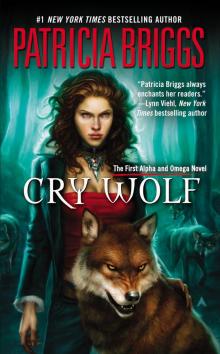 Cry Wolf
Cry Wolf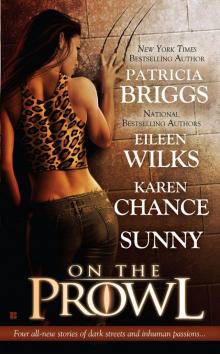 On the Prowl
On the Prowl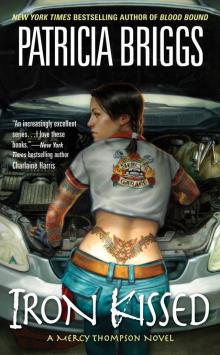 Iron Kissed
Iron Kissed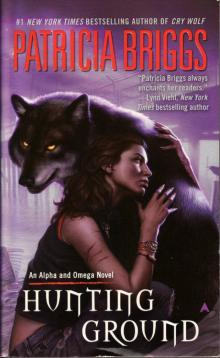 Hunting Ground
Hunting Ground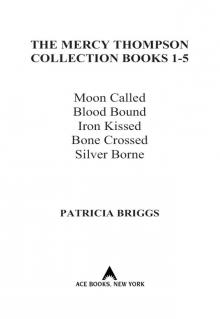 Patricia Briggs Mercy Thompson: Hopcross Jilly
Patricia Briggs Mercy Thompson: Hopcross Jilly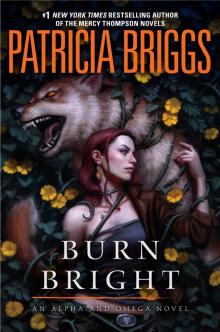 Burn Bright
Burn Bright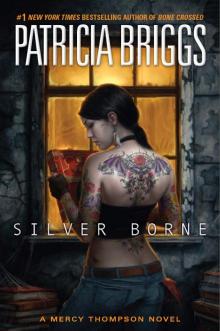 Silver Borne
Silver Borne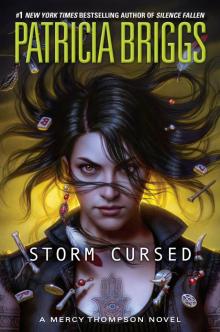 Storm Cursed
Storm Cursed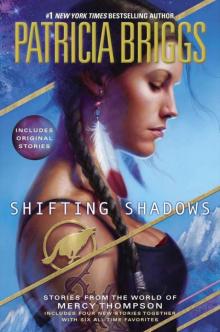 Shifting Shadows
Shifting Shadows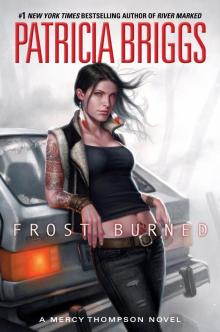 Frost Burned
Frost Burned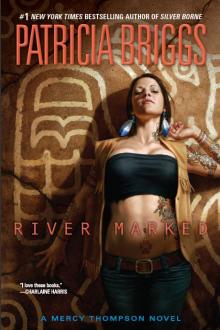 River Marked
River Marked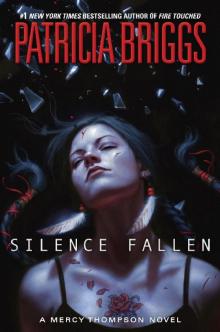 Silence Fallen
Silence Fallen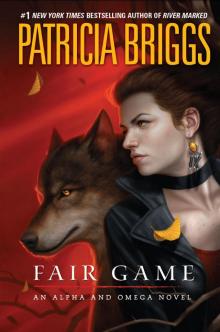 Fair Game
Fair Game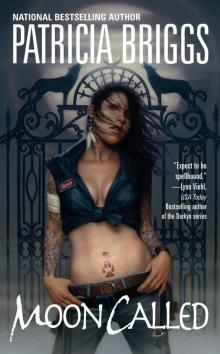 Moon Called
Moon Called Fire Touched
Fire Touched Dead Heat
Dead Heat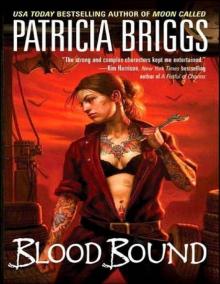 Blood Bound
Blood Bound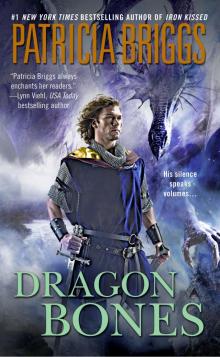 Dragon Bones
Dragon Bones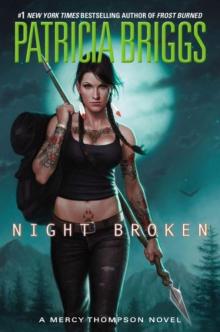 Night Broken
Night Broken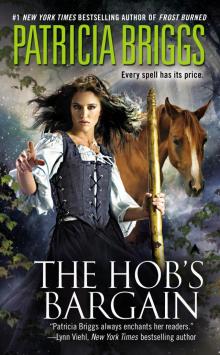 The Hobs Bargain
The Hobs Bargain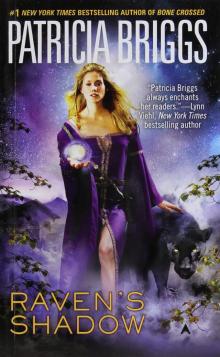 Ravens Shadow
Ravens Shadow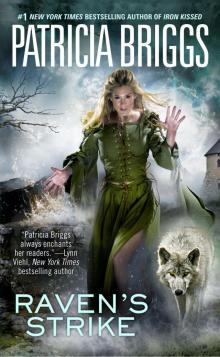 Ravens Strike
Ravens Strike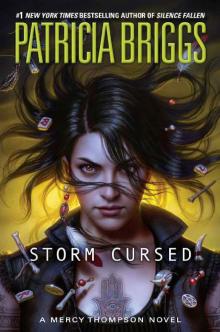 Storm Cursed (A Mercy Thompson Novel)
Storm Cursed (A Mercy Thompson Novel)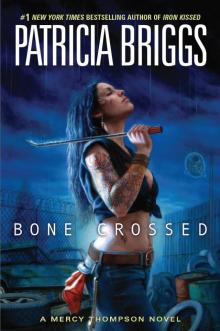 Bone Crossed
Bone Crossed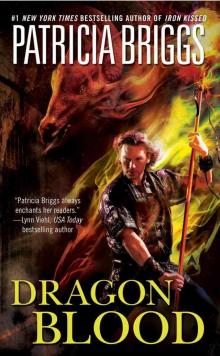 Dragon Blood
Dragon Blood Smoke Bitten: Mercy Thompson: Book 12
Smoke Bitten: Mercy Thompson: Book 12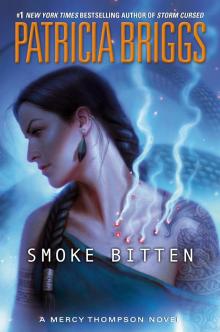 Smoke Bitten
Smoke Bitten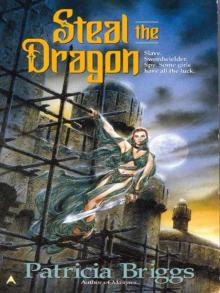 Steal the Dragon
Steal the Dragon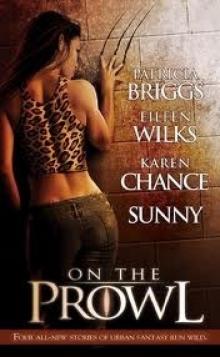 0.5 On The Prowl (alpha and omega)
0.5 On The Prowl (alpha and omega)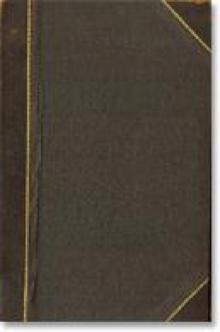 Alpha and Omega
Alpha and Omega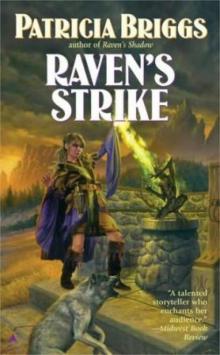 Raven's Strike rd-2
Raven's Strike rd-2![[Mercy 03] - Iron Kissed Read online](http://i1.bookreadfree.com/i/03/24/mercy_03_-_iron_kissed_preview.jpg) [Mercy 03] - Iron Kissed
[Mercy 03] - Iron Kissed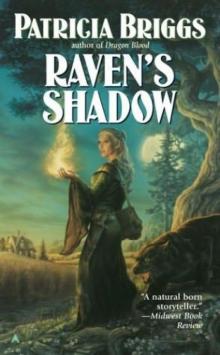 Raven's Shadow rd-1
Raven's Shadow rd-1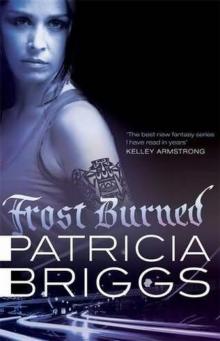 Frost Burned mt-7
Frost Burned mt-7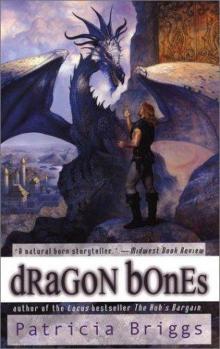 Dragon Bones h-1
Dragon Bones h-1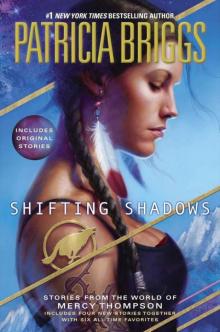 Shifting Shadows: Stories from the World of Mercy Thompson
Shifting Shadows: Stories from the World of Mercy Thompson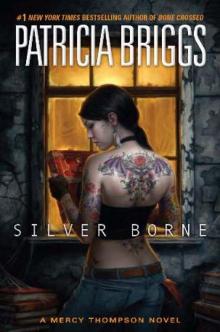 Silver Borne mt-5
Silver Borne mt-5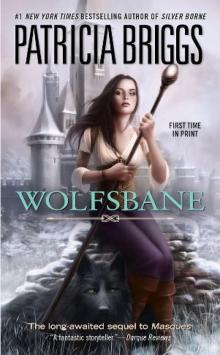 Wolfsbane s-2
Wolfsbane s-2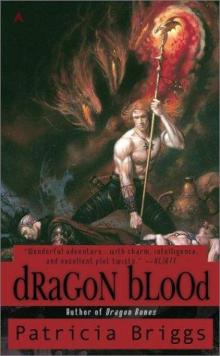 Dragon Blood h-2
Dragon Blood h-2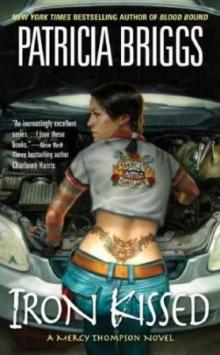 Iron Kissed mt-3
Iron Kissed mt-3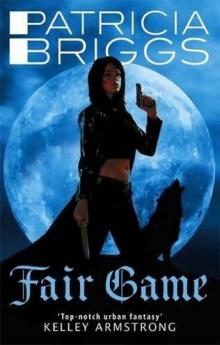 Fair Game aao-3
Fair Game aao-3 Masques s-1
Masques s-1![[Hurog 01] - Dragon Bones Read online](http://i1.bookreadfree.com/i1/04/03/hurog_01_-_dragon_bones_preview.jpg) [Hurog 01] - Dragon Bones
[Hurog 01] - Dragon Bones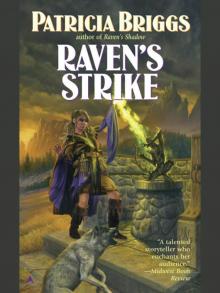 Raven s Strike
Raven s Strike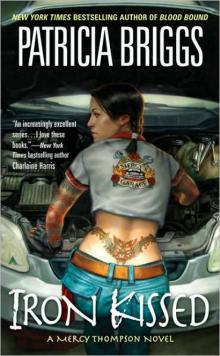 Mercedes Thompson 03: Iron Kissed
Mercedes Thompson 03: Iron Kissed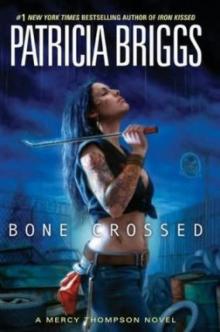 Bone Crossed mt-4
Bone Crossed mt-4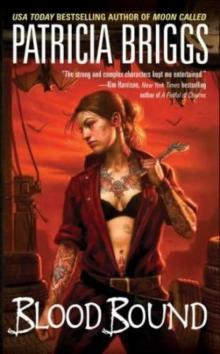 Blood Bound mt-2
Blood Bound mt-2![[Mercy 01] - Moon Called Read online](http://i1.bookreadfree.com/i2/04/09/mercy_01_-_moon_called_preview.jpg) [Mercy 01] - Moon Called
[Mercy 01] - Moon Called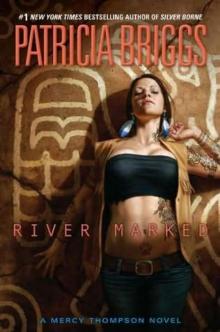 River Marked mt-6
River Marked mt-6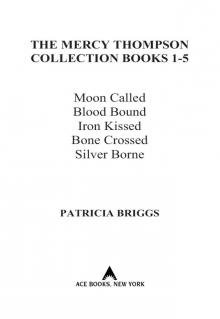 The Mercy Thompson Collection
The Mercy Thompson Collection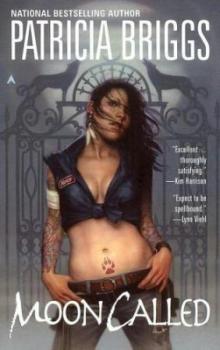 Moon Called mt-1
Moon Called mt-1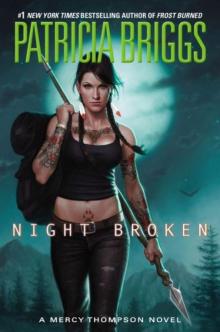 Mercy Thompson 8: Night Broken
Mercy Thompson 8: Night Broken